This long-bladed dirk has a blade of single-edged blade of damascus. The hilt is of polished hardwood with integrated layers of steel and brass in the center of the grip. Brass pins finish the grip and the pommel is capped with rondels of steel and file-work brass. The thick spine strengthens the blade and stiffens the spine; ideal for delivering a strong and puncturing thrusting strike.
The Dirk is paired with a sheath of robust stitched brown leather with an integrated belt loop and retaining strap.
A direct descendent of the medieval Bollock dagger, the Scottish Dirk was a fighting blade that nearly never left the side of the Highlander who possessed it.
Thy Highlanders always appeared like warriors; as if their arms [weapons] had been limbs and members of their bodies. They were never seen without them; they traveled, they attended fairs and markets, nay they went to church with their broadswords and dirks.
For centuries the Scots were at war with the English, and when not at war with the English, the Scottish Clans would fight against one another in the never-ending struggle for local dominance. With constant conflict on his horizon, the Scot learned to live with his weapons at his side. His dirk would have been his trusty sidearm, a long dagger used not only used for fighting, but also for everyday utility and for cutting his supper meats.
The Dirk was most often used in an ice-pick fighting grip, and was often paired with the targe shield. The Scot could hold his dirk in his left hand ready to switch into his right hand should he lose his main weapon or even used as a surprise left stabbing weapon on a foe that came too close.
After the disastrous Scottish defeat of Culloden, the English banned the dirk along with most of the national weapons of the Scots. Only those in the military and the well-connected could carry them openly. As the British military felt financial strain the the decades after 1745, the dirk lost its position as a standard regimental weapon of British Army Highlander Regiments to the practical bayonet. Only officers and the well-to-do would continue to carry dirks, and these became embellished status symbols, often intentionally decorated to match the cutlery of the house.


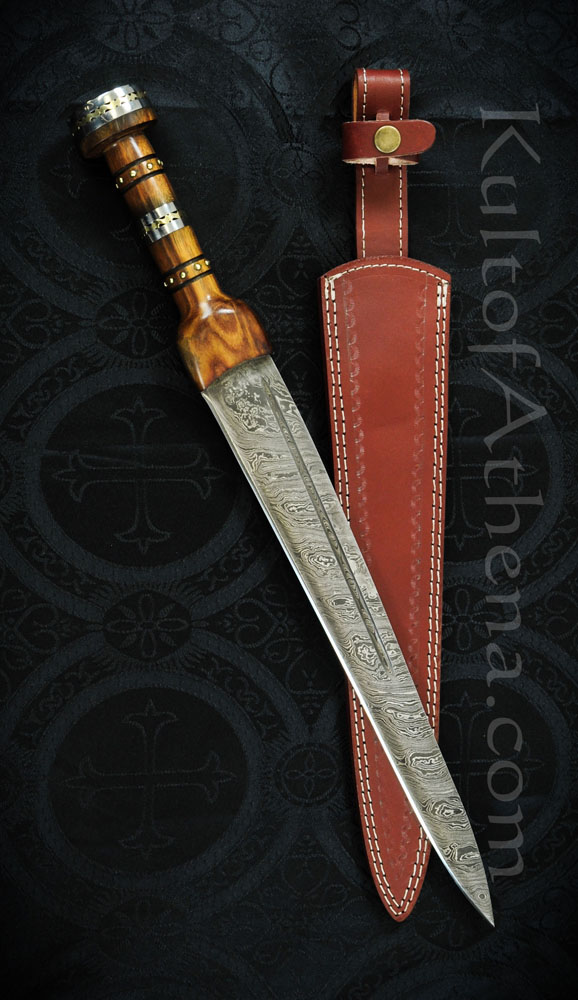
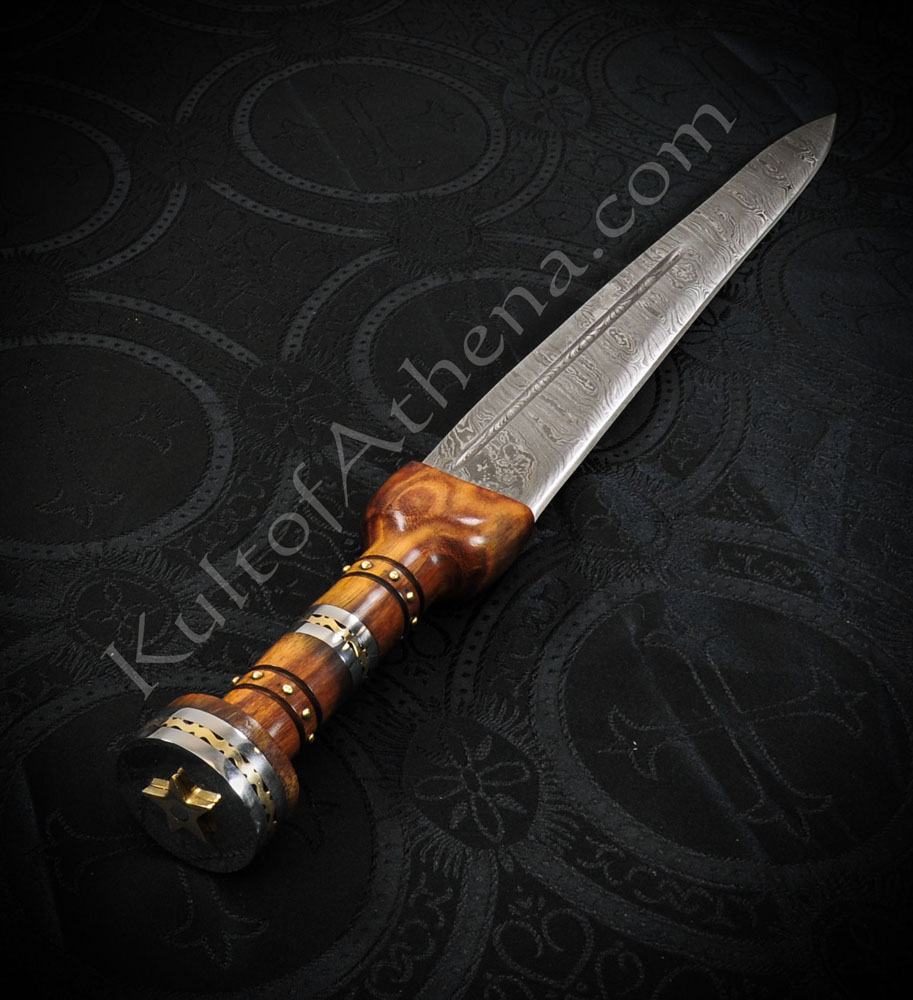

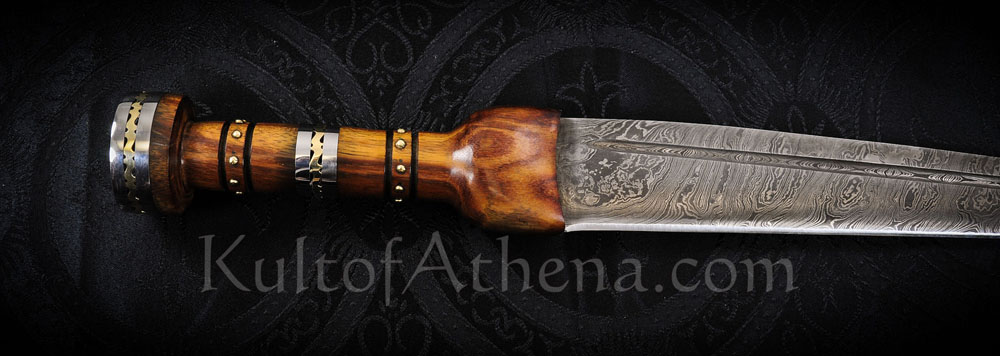
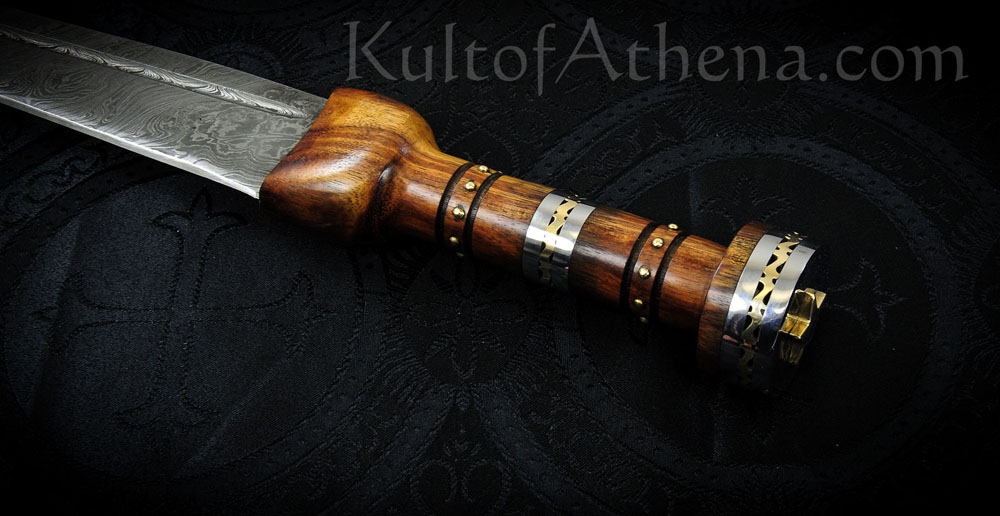
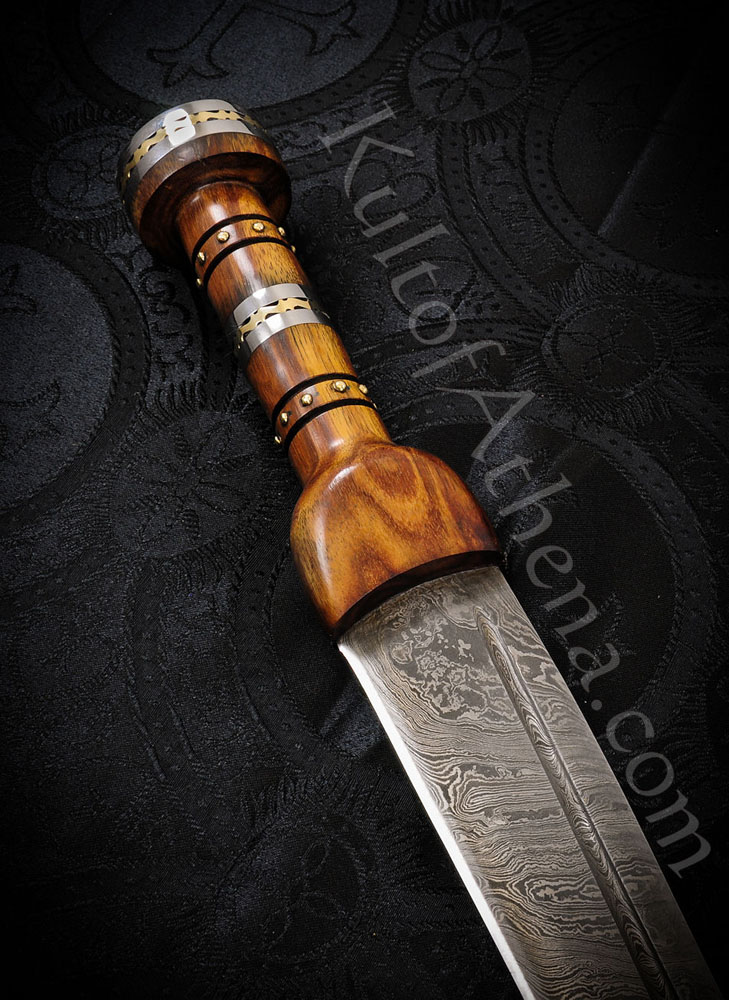

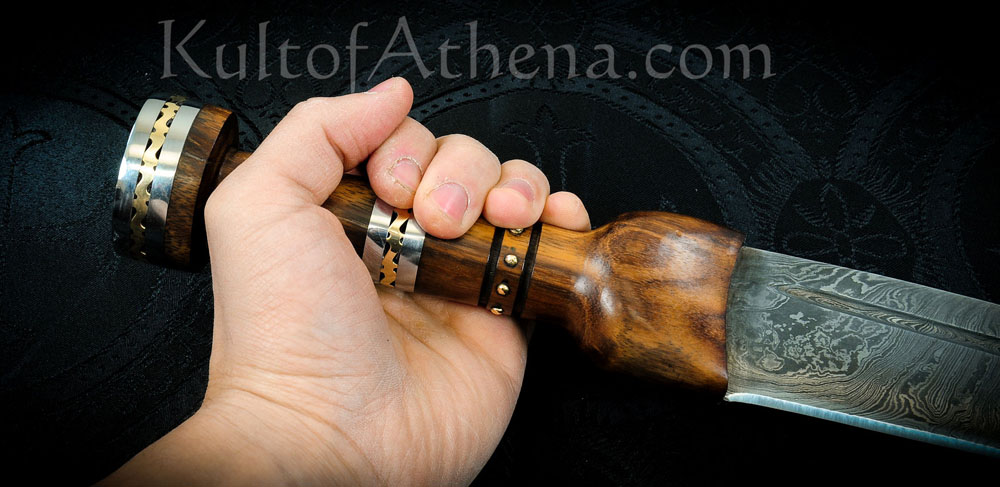
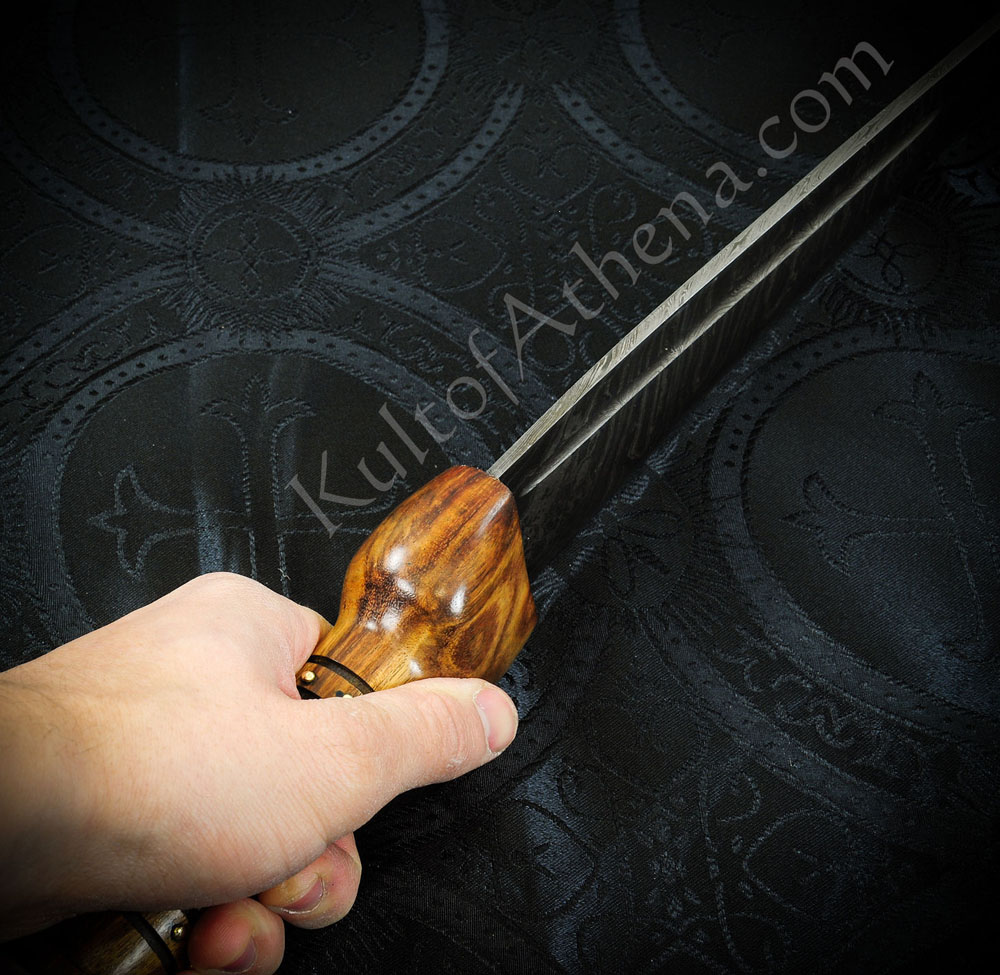

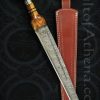
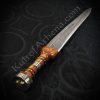
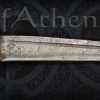
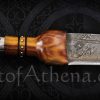
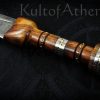
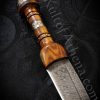
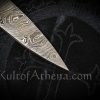
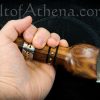
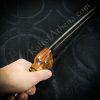
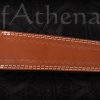
Josef –
This blade will surprise you. My fiance got this for a Christmas gift. For the first time I received a weapon as a gift that I love. It has a strong heft to it. The hilt Assembly is trustworthy. The blade has an ok edge to it. The pattern weld is a thing of beauty.
Caleb –
Not bad, not great. My grandmother is Scottish and we are distantly related to William Wallace, so I figured a Scottish weapon would be pretty cool. The dirk was shipped and delivered really quickly, and the pattern is absolutely beautiful, but the edge is not straight… The sharpened edge curves inward in the middle and makes the whole edge kind of wavy, which would be fine if that’s how it was meant to be, but it’s not…
Kyle ross –
Nice display piece The pattern on the blade looks great and the grip is very detailed however there where minor inconsistencies including the edge and point being dull or with light damage to them and the peen portion of the handle meaning the star is actually lopsided however considering the price this is still a good buy for a display piece I’d highly recommend it
Ryan Teeter –
Much better than anticipated. This is an unbelievable value for the price. Fit and finish is the closest to perfect I have ever seen. There are no gaps, and the mettle work in the handle is beautiful, without being harsh on your hand. The blade is an unusual shape, but that is depicted in the pictures. The sheath is low quality, but a well made sheath is worth more than the price of the knife. Since leather isn’t historically accurate to dirks I intend to make a wooden sheath anyway. To my surprise this appears to be authentic pattern welded steel. I was expecting a surface print for this price. I would be interested to learn who the maker is. While no name is listed, there are several other dirks on KoA with similar features. I will likely buy several of the others offered.
Ian Hall (verified owner) –
Bought this not expecting it to be as clean as it looks, was pleasantly surprised. The hilt is silky smooth despite the multiple layers, blade is reasonably thick and could do some light machete work if needed, blade beautiful and straight. Accidently cut my leg trimming branches for a fire, 5/5.